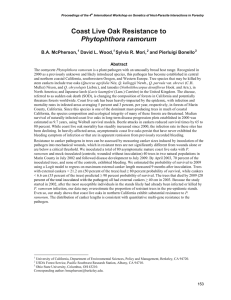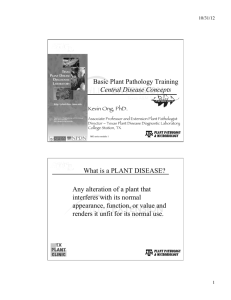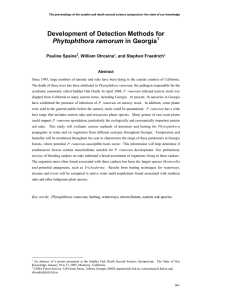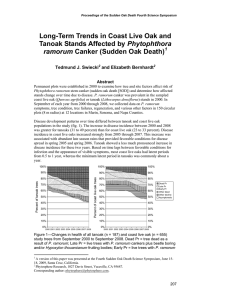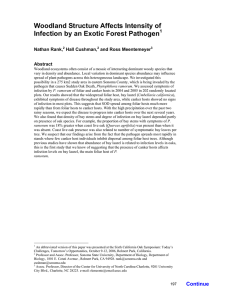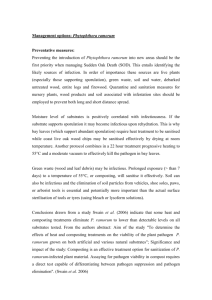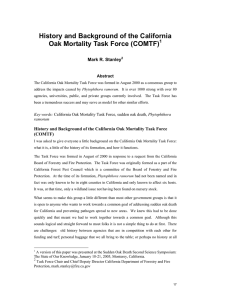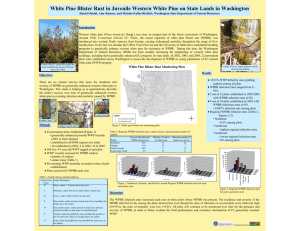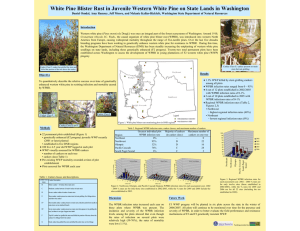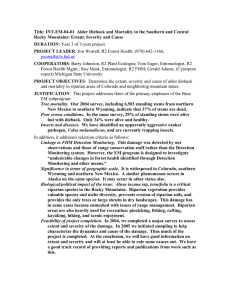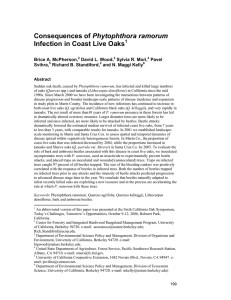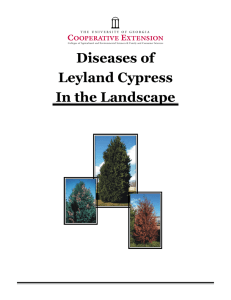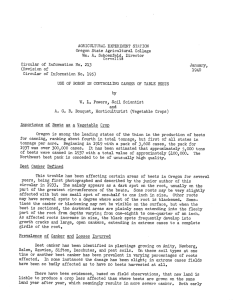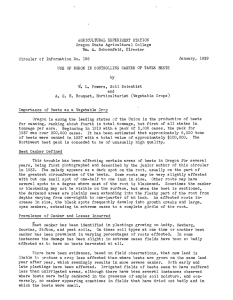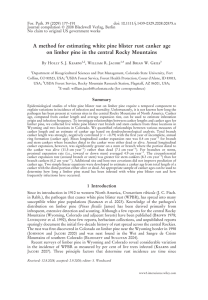Phytophthora ramorum Search for Resistance and Mechanisms S.R. Mori,
advertisement
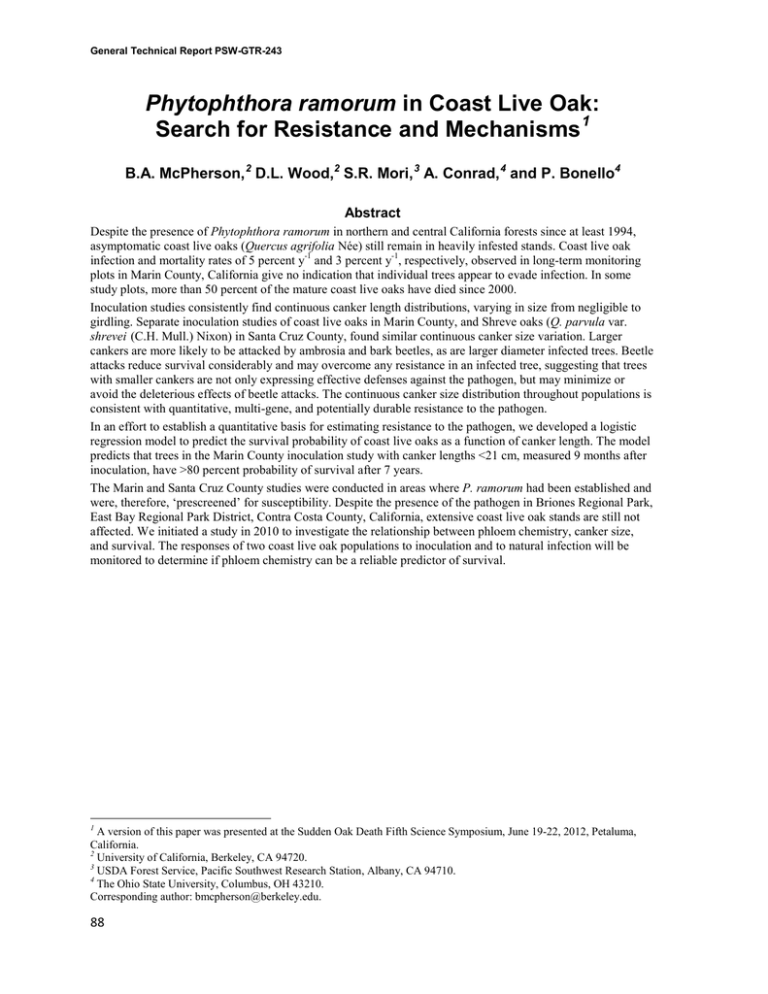
General Technical Report PSW-GTR-243 Phytophthora ramorum in Coast Live Oak: Search for Resistance and Mechanisms 1 B.A. McPherson, 2 D.L. Wood,2 S.R. Mori, 3 A. Conrad, 4 and P. Bonello4 Abstract Despite the presence of Phytophthora ramorum in northern and central California forests since at least 1994, asymptomatic coast live oaks (Quercus agrifolia Née) still remain in heavily infested stands. Coast live oak infection and mortality rates of 5 percent y-1 and 3 percent y-1, respectively, observed in long-term monitoring plots in Marin County, California give no indication that individual trees appear to evade infection. In some study plots, more than 50 percent of the mature coast live oaks have died since 2000. Inoculation studies consistently find continuous canker length distributions, varying in size from negligible to girdling. Separate inoculation studies of coast live oaks in Marin County, and Shreve oaks (Q. parvula var. shrevei (C.H. Mull.) Nixon) in Santa Cruz County, found similar continuous canker size variation. Larger cankers are more likely to be attacked by ambrosia and bark beetles, as are larger diameter infected trees. Beetle attacks reduce survival considerably and may overcome any resistance in an infected tree, suggesting that trees with smaller cankers are not only expressing effective defenses against the pathogen, but may minimize or avoid the deleterious effects of beetle attacks. The continuous canker size distribution throughout populations is consistent with quantitative, multi-gene, and potentially durable resistance to the pathogen. In an effort to establish a quantitative basis for estimating resistance to the pathogen, we developed a logistic regression model to predict the survival probability of coast live oaks as a function of canker length. The model predicts that trees in the Marin County inoculation study with canker lengths <21 cm, measured 9 months after inoculation, have >80 percent probability of survival after 7 years. The Marin and Santa Cruz County studies were conducted in areas where P. ramorum had been established and were, therefore, ‘prescreened’ for susceptibility. Despite the presence of the pathogen in Briones Regional Park, East Bay Regional Park District, Contra Costa County, California, extensive coast live oak stands are still not affected. We initiated a study in 2010 to investigate the relationship between phloem chemistry, canker size, and survival. The responses of two coast live oak populations to inoculation and to natural infection will be monitored to determine if phloem chemistry can be a reliable predictor of survival. 1 A version of this paper was presented at the Sudden Oak Death Fifth Science Symposium, June 19-22, 2012, Petaluma, California. 2 University of California, Berkeley, CA 94720. 3 USDA Forest Service, Pacific Southwest Research Station, Albany, CA 94710. 4 The Ohio State University, Columbus, OH 43210. Corresponding author: bmcpherson@berkeley.edu. 88
